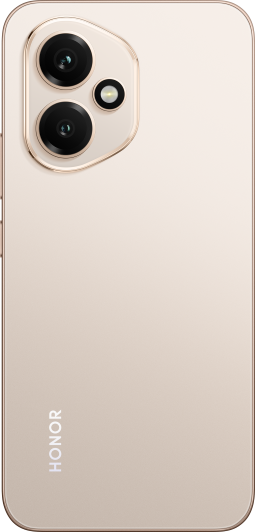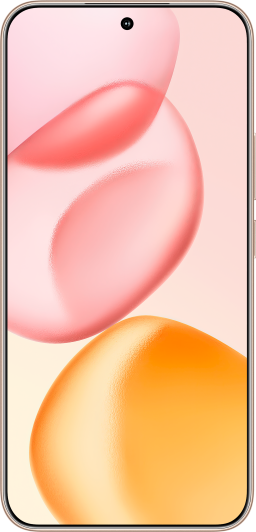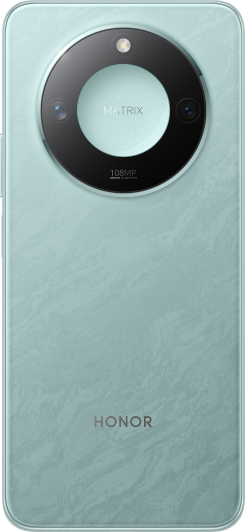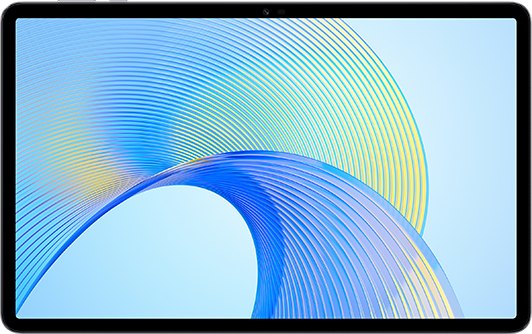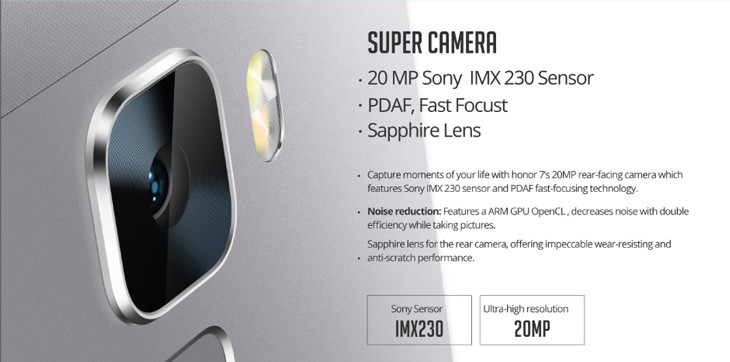TOP

我的荣耀 开启荣耀之旅
By clicking AGREE, you indicate that you accept the HONOR PLATFORM TERMS OF USE.
Keep up to date with Honor products, services and discounts via email.
For further details about withdrawing your consent, please see HONOR Platform Privacy Statement.

Honor 7 Brings You Top-end Smartphone Photography
Cameras were the primary photographic equipment in the past. Today, more people than ever are taking photos using smartphones as camera phones and photo shooting hardware/software are developed in full swing.
A report released in 2014 shows that the percentage of people using camera phones to take photos exceeds 90%; 78.5% people take photos using camera phones during travel, compared with 65% people who use cameras; the percentage of women using camera phones to take photos reaches 85.4%.
The Annual Research Report on China’s Digital Camera Market 2014–2015 shows that the consumer-grade camera market experienced contraction in 2014 due to the extensive penetration of smartphones and other photographic equipment; the single-lens reflex camera market grows at a slow pace; compact digital cameras that used to occupy the largest share in the consumer-grade digital camera market bear the brunt. Mobile photographic equipment has become the preferred choice for on-the-road photography.
In addition to prices, consumers would look at the camera features of smartphones when deciding a purchase.
In 2014, Honor, a new sub-brand of Huawei, launched the Huawei Honor 6 Plus, the world’s first smartphone that comes with a bionic parallel dual-lens camera. Its superior camera function draws extensive attention among consumers and raises consumers’ anticipation for Honor’s upcoming flagship smartphone.
Recently Honor released the Huawei honor 7 flagship smartphone. Following are its unique camera features:
Sony IMX 230 camera sensor and a 20-megapixel camera
The honor 7 is the world’s first smartphone that comes with the IMX 230 camera sensor, which was launched by Sony at the end of 2014. The compact camera sensor is an Exmor RS stacked CMOS image sensor that brings image enhancements and cutting-edge functions to smartphone cameras. The camera sensor is the industry’s first image sensor that can be fitted into smartphones and features phase-detection autofocus and precise focusing on moving objects. The high dynamic range (HDR) function allows users to take photos of high-contrast scenes (such as backlight) with brightened backgrounds and subjects.
Non–aspherical lenses for 6P, dual-color temperature and dual-LED flashlight, stronger resolving power, and better image definition
A camera, be it a single-lens reflex camera or a smartphone camera, uses an array of lenses to achieve the focal length and imaging. Each lens corrects the deviation of the previous lens. An early single-lens reflex camera consists of an assembly of aspherical lenses that cannot focus parallel light beams at a point completely, which affects image quality. Non-aspherical lenses solve the problems of spherical aberration compensation, image distortion correction, and lens compactization. Non-aspherical lenses outperform aspherical lenses in photo shooting, and the effect gets better with more lenses. The honor 7 camera consists of six non-aspherical lenses, which is the maximum number of lenses that can be configured to achieve compactness and cost effectiveness.
The honor 7 comes with a dual-color temperature and dual-LED flashlight. Many LED flashlights are made from blue LED and fluorescent powder. These materials limit the spectral range, increasing the blue light energy while reducing the green and red light energies. As a result, the photos taken with the LED flashlight on have color distortion (pale colors and cool color tones). Because the human eye is most sensitive to the green color and less sensitive to the blue and red colors, and because the LED spectral range is incomplete and the fluorescent powder causes negative impact on imaging, the photos taken with the LED flashlight on tend to show red eyes and oily and pale skin tones. Instead of simply increasing the number of LED flashlights, the dual-color temperature and dual-LED flashlight is equipped with a high-luminance WLED flashlight and an amber-colored warm-color LED flashlight with lower luminance to realize color temperature compensation, thus producing softer color tones in images and achieving more accurate white balance. The dual-color temperature and dual-LED flashlight is especially suitable for photo shooting in a dark environment. To deliver optimal user experience, the R&D process must consider multiple aspects such as performance, drive, product lines, and gears in a comprehensive manner.
Second-generation independent image signal processor (ISP) at the single-lens reflex level (achieving a 50% power consumption reduction) and smart 3.0 professional image processing engine
After image data is captured by the front-end camera sensor, the data is processed by an analog signal processor (ASP), analog-digital converter (ADC), pre-SIP, and post-ISP before the final image is displayed on the viewfinder. The ISP is the brain of a camera and plays a role in autofocus, filter of unwanted information from images, human face recognition, and automatic scene recognition. It works independently or in an integrated manner. Smartphones equipped with an independent ISP excel in image processing. As ever more smartphones come with high-resolution cameras, high-speed burst shots, and full high definition recording, the processing performance of the ISP must be improved accordingly. The honor 7 packs the second-generation independent ISP at the single-lens reflex level, which reduces power consumption by 50%. It also comes with the Huawei-developed smart 3.0 professional image processing engine, which is also available on the Huawei P6 and P7 and has garnered praise.
Phase detection autofocus (PDAF) and Hybrid optimization algorithm, achieving 0.1s focusing time
Focusing is the process whereby a motor moves to bring the subject into focus. Focusing algorithms are divided into contrast detection and phase detection.
Contrast detection requires the motor to move in small steps until the image displayed on the viewfinder shows the highest contrast. Contrast detection achieves precise focusing but takes a long time because the motor has to keep moving to find the highest contrast.
Principle of contrast detection
Phase detection is the process whereby the phase difference of the subject at the imaging plane is calculated to determine the distance between the motor’s current position and the position required for bringing the subject into focus and then the motor moves to this position. Phase detection takes a short time, but the phase difference is affected by various factors such as noises; therefore, phase detection is not suitable for focusing at low luminance, in a flat area, and on parallel patterns.
Principle of phase detection
The honor 7 adopts a hybrid focusing algorithm that combines the strengths of phase detection and contrast detection. Its camera calculates the distance that the motor should move to bring the subject into focus based on the phase difference. After the motor moves to the in-focus position, the camera performs contrast detection to determine the accurate focusing position. This algorithm ensures focusing precision while increasing the focusing speed. The honor 7 also adopts the Hybrid optimization algorithm to achieve 0.1s focusing time.
Focusing principle of the honor 7 camera
Rear camera coated with sapphire, which is second only to diamond
Many smartphone users encounter the problem where the glass screen can withstand the scratching by keys and razor blades without any marks left but has numerous tiny scratches after a certain time of use. These tiny scratches are due to the contact with the quartz sand floating in the air (with Mohs hardness of 7).
The scratches and abrasions caused to a smartphone camera result in much more serious impact than that caused by screen scratches. The latter damage only affects the phone’s appearance, but the former damage degrades the imaging quality. To avoid such damage, the honor 7 rear camera is coated with sapphire as a protective layer. Sapphire is the crystal morphology of Al2O3, which is the hardest oxide crystal with unimaginable hardness. Its hardness is second only to diamond (with Mohs hardness of 10) and much higher than glass (with Mohs hardness of 6). Sapphire features superstrong rigidity and resistance to abrasions, impact, and scratches. Lenses made of sapphire can withstand scratches during a long time of use, thereby ensuring good image quality.
Abundant photo shooting scenes
In addition to the cutting-edge hardware configuration, the honor 7 camera provides a wide variety of software functions to optimize image quality and make photo shooting more creative. The honor 7 camera offers abundant built-in shooting scene settings, such as the Gourmet mode, custom filter, slow motion, demisting filter, delayed shooting, and Light painting.
The honor 7 provides powerful camera functions even without a dual-lens rear camera. Following is a photo taken by the honor 7 camera. (For more photos, see the materials provided by the HQ.)
Latest News
Copyright © Honor Device Co., Ltd. 2020-2025. All rights reserved.
![]() 粤公网安备44030002002883号 粤ICP备20047157号
粤公网安备44030002002883号 粤ICP备20047157号

